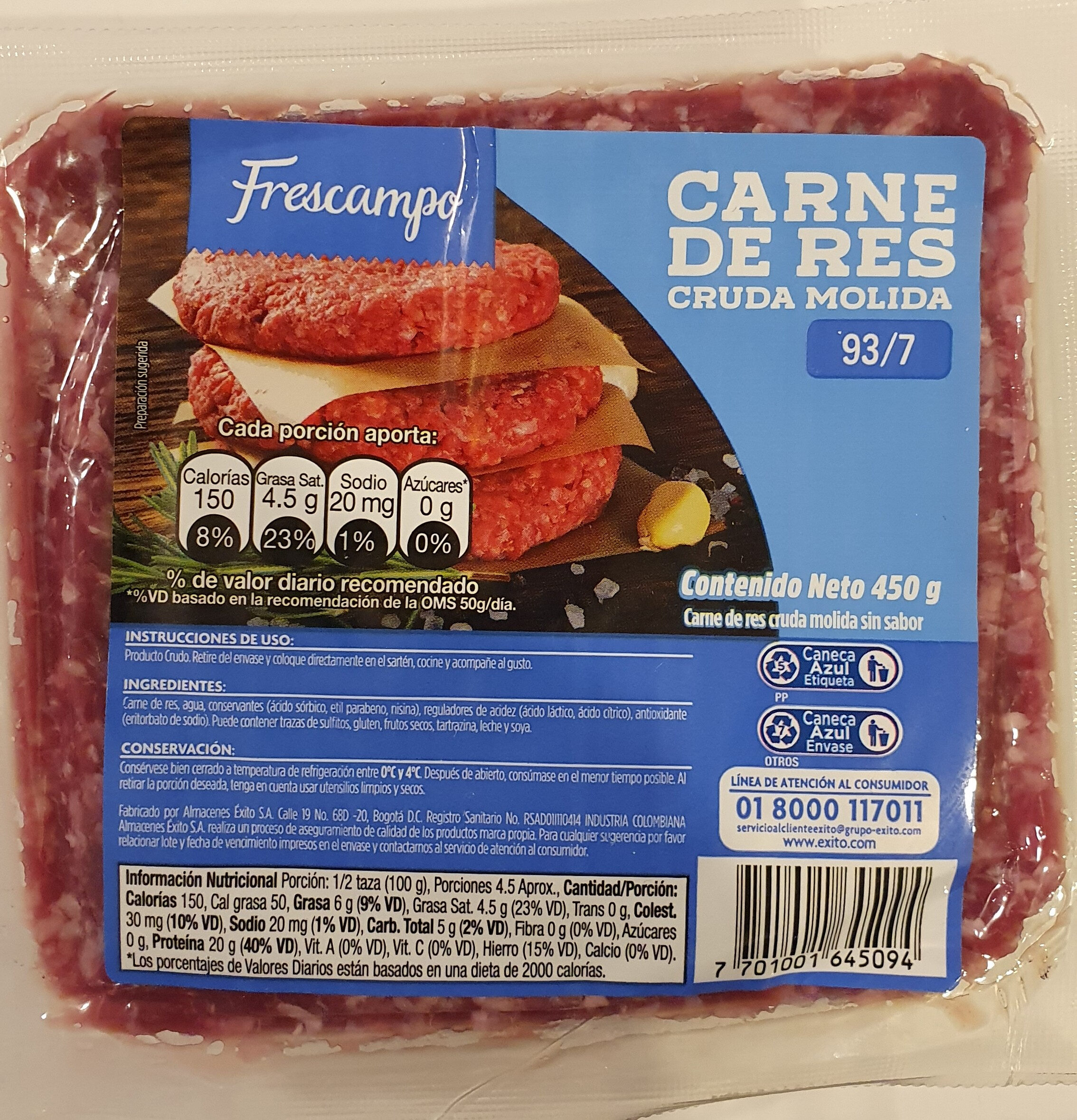Carne de res cruda molida - Frescampo - 450 g
This product page is not complete. You can help to complete it by editing it and adding more data from the photos we have, or by taking more photos using the app for Android or iPhone/iPad. Thank you!
×
Barcode: 7701001645094 (EAN / EAN-13)
Quantity: 450 g
Packaging: Plastic
Brands: Frescampo
Categories: Meats and their products, Beef and its products, Meats, Beef
Origin of ingredients: Colombia
Manufacturing or processing places: Colombia
Stores: Carulla
Countries where sold: Colombia
Matching with your preferences
Environment
Packaging
Transportation
Report a problem
Data sources
Product added on by stephcal92
Last edit of product page on by packbot.
Product page also edited by openfoodfacts-contributors.
If the data is incomplete or incorrect, you can complete or correct it by editing this page.








